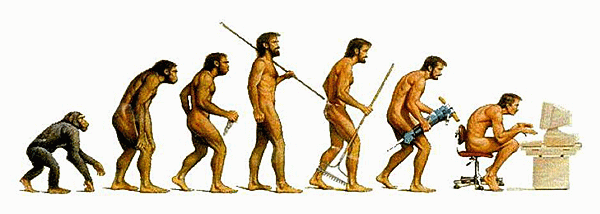We sit more, we move less and we have become sedentary. Yes, this is now the society norm. Why is active living the minority? Why is the fit individual looked upon
as unusual or “weird”? Why do
people think they cannot perform basic human movements that at one time were
completely natural actions?
Squatting, crawling, climbing, hanging, throwing, running, twisting,
lunging, pulling, pushing and lifting are basic human movements that we have
been doing since the beginning of time.
But yet, in our current state we have defaulted into inactivity,
limiting our movement capabilities.
This in turn, creates movement dysfunction, injury, obesity, disease and
unhealthy living. Simply moving
more can cure many of these unhealthy issues.
Prolonged sitting, TV watching, computer usage, video gaming and texting has become more popular than simply playing. Parks are vacant. Playgrounds are desolate. Black court basketball courts are empty. Ask your co-employee if they can climb a rope or fluidly squat to the ground. The statistics say they cannot perform these tasks. Why are we migrating away from demonstrating basic human movements? Why would people rather sit all day than get up and be active? Movement is the cure and can help decrease pain, improve lifestyle habits, and create a more enjoyable life, which will develop overall personal performance.
 |
| Many people do not have adequate mobility to squat to the ground. |
 |
| The deep squat used to be a natural human movement. |
But we need a complete paradigm shift in our way of thinking. Many people are reactive in regards to movement. They wait until pain arises or their doctor tells them they “need to exercise more” or they have trouble walking a flight of stairs. Please do not wait till something happens to move. It might be too late if you wait.
Moving erratic, with poor quality and high repetition is not
the answer either. Considering
your personal movement capacities is such a critical component when prescribing
a dosage of activity.
Just because an activity makes you sore and tired doesn't mean it was good for you. Once you have created an understanding of your own individual guidelines, get out there and express your movement.
Work your mobility, which will improve your total range of motion. Mobility is the ultimate aspiration, as we grow older. Work your strength. Strength doesn’t necessarily mean how much can you bench press or squat. Strength is the expression of how well you can control your range of motion. Strength is bodyweight management. Strength is power. Strength is having balance. If you can bench press 225 pounds but can not perform one bodyweight pull-up, it’s a problem.
Just because an activity makes you sore and tired doesn't mean it was good for you. Once you have created an understanding of your own individual guidelines, get out there and express your movement.
Work your mobility, which will improve your total range of motion. Mobility is the ultimate aspiration, as we grow older. Work your strength. Strength doesn’t necessarily mean how much can you bench press or squat. Strength is the expression of how well you can control your range of motion. Strength is bodyweight management. Strength is power. Strength is having balance. If you can bench press 225 pounds but can not perform one bodyweight pull-up, it’s a problem.
So here is my challenge for you: Weekly, do your best to
move as much as you can. There is
no specific recommendation like “3 days for 60 minutes”. The more you move, the better you will
feel. Daily movement is essential
to quality living. Squat, crawl,
climb, hang, throw, run, twist, lunge, push, pull and lift. Do these things in a fluid and quality
manner. Do not bash your body into
the ground. Movement should make
you feel good, not beaten up. Push
your limits but recognize how far you should stretch those limits. Add recovery strategies to
promote blood flow, flexibility and decrease inflammation. Eat sensible. Movement and nutrition enhancement can change your life.
Let’s take personal responsibility to create a shift in
thinking regarding movement and exercise.
It’s for all of us. We just
need to find the right dosage required to upgrade our lives. Now, go move!




No comments:
Post a Comment